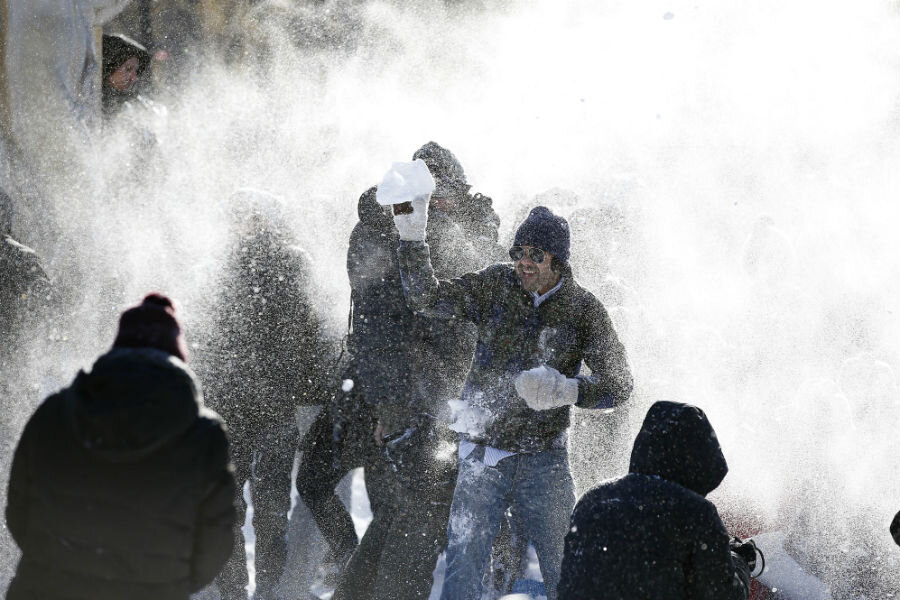Number of blizzards doubled in past 20 years, researcher says
Loading...
Tired of the snow? You should be. According to new research from Ball State University, the annual frequency of blizzards like Jonas is twice as high as it was two decades ago.
Jennifer Coleman, a geographer at the Muncie, Ind. college, found in her preliminary research that snowstorms like the record-breaking blizzard that ravished the East Coast this weekend may have been on the rise since the 1990s. Between 1960 and 1994, the average number of blizzards per year was nine. But from 1995 to now, that figure is 19.
The increase in number, as USA Today reports, currently has two possible explanations according to Dr. Coleman: One, there may just be better documentation of storms nowadays, or two, it has something to do with a phenomenon called sunspots.
Sunspots are large, dark spots that move across the sun’s photosphere, visible from solar telescopes. They can measure up to 31,000 miles in diameter, shrinking and expanding as they come and go. Scientists do not fully understand their origins, but they occur over regions of intense magnetic activity.
By recording daily observations of sunspots, a practice that dates back to Galileo, scientists have been able to calculate a 11-year sunspot cycle in which the number of sunspots waxes and wanes.
As sunspot activity was low in the mid-1990s and the mid-2000s, as well as now, Coleman projects that fewer sunspots correlate with greater snow storms.
"Sunspot-minimum periods tend to coincide with more frequent polar outbreaks in the Northern Hemisphere that could increase the likelihood for blizzard occurrence," Coleman told USA Today’s Doyle Rice. "However, sunspot activity is only a small component in explaining the frequency of blizzard occurrence."
Other scientists suggest that the blitz in snowstorms may be attributed to macro climate patterns in the ocean and the atmosphere.
Brad Anderson, a meteorologist from Lincoln, Neb., told USA Today he agrees with Coleman that blizzards happen in cycles. Dr. Anderson, who isn’t associated with Coleman's research currently under peer journal review, said that there were lots of blizzards in the 1970s but fewer in the 1980s.
Coleman added that a substantial amount of additional research and investigation will be needed to figure the exact reasons for the rise in snow storms.
More than 700 blizzards have taken place in the continental US since 1960. In order for a snowstorm to be in the official “blizzard” category, it must meet three conditions that must persist for three hours or longer – heavy or blowing snow, continuous winds of 35 mph, and visibility of one-quarter mile or less.
According to Coleman, blizzards in recent years are occurring outside the traditional season of October to March. The northern Plains and the Midwest are the regions most affected by "out-of-season" blizzards and blizzards in general, but it’s the ones on the East Coast that make the news. These severe snowstorms have taken place in all months except September and August.
Forty-four states have had blizzards, Coleman said – even California and Texas,
The only six states that have never recorded a blizzard are Alabama, Florida, Louisiana, Mississippi, South Carolina, and Tennessee.
The most recent snowstorm on the East Coast had largely subsided by Sunday afternoon. With 60 million people affected, many endured power outages, cancelled transportation, and at least 20 people died in related incidents. While New York, D.C., and Baltimore are on the road to recovery, experts warn that residents must remain vigilant and, for the most part, indoors.





